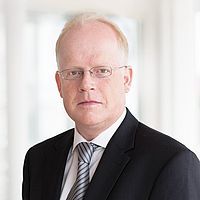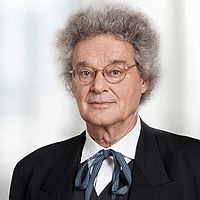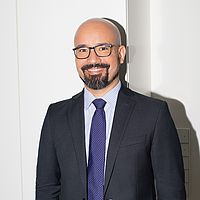IP Report 2013/II
Patent Law
Reported by Dr. Hans Wegner
and Bastian Best
Under German practice the principle of a “direct and unambiguous” disclosure applies to the questions of novelty, priority and inadmissible amendment. However, to validly claim the priority of an earlier application a feature combination has to meet a stricter test: In addition to being directly and unambiguously disclosed in the priority document, it must be disclosed also as “belonging to the invention”. This additional requirement of being disclosed as a possible embodiment of the invention also applies to the assessment of inadmissible amendment.
The case at hand related to a nullity complaint against the German part of the European patent 0 823 327. The validity of the attacked patent hinged on the question whether the prior art cited by the nullity plaintiff, an international patent application published only after the relevant date of the attacked patent, validly claimed the earlier priority of two British patent applications.
The attacked patent was directed to a method for making lithographic printing plates which are used, e.g., in offset printing machines. The inventive printing plate has a positive photosensitive composition, portions of which are exposed to a light ray. Subsequently, an alkali developer is used to remove the exposed portions so that only the unexposed portions remain to form the desired printing surface. The decisive feature of claim 1 defined that the positive photosensitive composition has no photosensitivity to ultraviolet light. Accordingly, the manufacturing of the printing plate does not require an operation under yellow light, but can be carried out, e.g., under normal daylight containing ultraviolet light.
It was undisputed that the international patent application, relied upon by the nullity plaintiff, disclosed the feature in question. However, since this application was filed only after the relevant date of the attacked patent it could only be used for a novelty attack if it validly claimed the priority of at least one of the earlier British applications. These priority applications did not explicitly mention a photosensitive composition that is insensitive to ultraviolet light.
In first instance the Federal Patent Court held that the priority claim was still valid as the feature in question could be directly and unambiguously derived from the priority documents. The Patent Court in this respect relied on the principles of the novelty test according to which the disclosure of a document is not limited to those facts explicitly recited, but also encompasses that which is self-evident for the person skilled in the art studying the document. Nothing else should apply when assessing the content of an earlier patent application for the purpose of determining the validity of a priority claim, with the additional limitation that the skilled person has to derive such a self-evident property in the earlier application as belonging to the invention. Although the property of insensitivity to ultraviolet light was not explicitly mentioned in the priority documents, the person skilled in the art would immediately recognize that the methods described in the priority documents did not require special light conditions. In the absence of such special measures, the Patent Court saw a clear hint for the skilled person that ultraviolet light, which is always present in normal daylight, had no impact on the handling of the described materials. Therefore, the Patent Court found that the document relied upon by the nullity plaintiff validly claimed the earlier priority and hence was novelty-destroying for the subject-matter of claim 1 of the attacked patent.
The Federal Supreme Court did not follow this line of reasoning. According to the Supreme Court it could well be possible that the materials mentioned in the priority documents were insensitive to ultraviolet light, however, this did not lead to an implicit disclosure of said property. The lack of an instruction to work under special light conditions does not lead to the conclusion that the described materials must indeed be insensitive to ultraviolet light. Rather, at the filing date of the priority documents corresponding methods under special light conditions were quite common also for daylight-insensitive materials. Therefore, it was at least equally possible that the person skilled in the art would have expected an explicit indication in the priority documents, if these documents intended to describe a method which does not require special light conditions thanks to the insensitivity to ultraviolet light of the used materials. As a result, it was held that the international application relied upon by the nullity plaintiff did not validly claim the earlier priorities and thus did not form prior art for the attacked patent.
Remarks
In the decision at hand the Federal Supreme Court emphasizes that the questions of novelty, priority and inadmissible amendment require a “direct and unambiguous” disclosure of the features in question. Concerning priority and inadmissible amendment, however, an additional requirement has to be met: The feature combination must also be disclosed “as belonging to the invention”.
The present case is remarkable, since the feature in question (insensitivity to ultraviolet light) was objectively present in certain examples of the priority documents and would have been novelty-destroying for the attacked patent in accordance with the novelty test. However, the priority documents were British applications published after the relevant date of the attacked patent and hence did not constitute prior art. On the other hand, the priority claim of the international patent application did not meet the stricter priority test, since the objective presence of the questioned property in the priority documents is not enough to validly base a priority claim thereon. Rather, to establish a valid priority date said property would have had to be disclosed as a possible embodiment of the invention in the priority documents.
From a dogmatic point of view, one could justify this difference in the disclosure standards based on the assumption that if an applicant wants to take advantage of the priority date of an earlier filing, this benefit is only justified if the questioned features were already conceived as “belonging to the invention” in the earlier filing, rather than being disclosed “accidentally”. However, it goes without saying that there will be almost never an easy answer to the question whether something is disclosed “as a possible embodiment of the invention” in the priority document.
Reported by Ronak Kalhor-Witzel
Representation by an attorney-at-law in addition to a patent attorney in nullity proceedings is typically to be considered as necessary according to Section 91 (1) 1 German Code of Civil Procedure if infringement proceedings concerning the patent-in-suit are pending simultaneously with the nullity proceedings and the same party or an economically related third party is involved.
In the case decided upon, the parties were in dispute about the reimbursement of the costs of an attorney-at-law representing the nullity plaintiff in first-instance nullity proceedings. The Federal Patent Court had declared the patent-in-suit partly invalid and ordered the nullity defendant to bear part of the costs of the nullity proceedings. In the cost-fixing proceedings, the Registrar did not take into account the costs of the attorneys-at-law. Upon the nullity plaintiff’s request for reconsideration, the Federal Patent Court ordered that these costs also be reimbursed. The nullity defendant brought an appeal on points of law to the Federal Supreme Court, which had been allowed by the Federal Patent Court.
As first important point, the Court held that an appeal on points of law against decisions of the Federal Patent Court concerning a cost-fixing decision is admissible according to Section 84 (2) 2 German Patent Act in conjunction with Section 574 (1) No. 2 German Code of Civil Procedure. Cost-fixing decisions of the Federal Patent Court must be based on the general rules of the German Code of Civil Procedure, although the German Patent Act has its own regulations. This decision thus supports the harmonization of the systems of remedies in cost-fixing proceedings.
The second important point addressed by this decision is that the costs of an attorney-at-law assisting in patent nullity proceedings are to be paid by the losing party in addition to the costs of the patent attorney, although Section 143 German Patent Act is not applicable by analogy. Section 143 (3) German Patent Act, which governs the representation in patent infringement proceedings, provides that the representation by a patent attorney in addition to the mandatory representation by an attorney-at-law is generally necessary for an adequate handling of patent litigation. However, this rule does not apply by analogy in case of nullity proceedings due to differences in the interests involved. The obligation to bear the costs of proceedings is governed by Section 91 (1) German Code of Civil Procedure, requiring that a measure (e.g., the additional representation by an attorney-at-law) whose reimbursement is requested has to be necessary for an adequate handling of the litigation. In this regard, the assessment as to whether a measure is necessary must be approached in a standardized manner.
In the present case, the Court decided that the following circumstances allow the conclusion that such a measure is necessary: First, infringement proceedings concerning the patent-in-suit are pending at the same time as the nullity proceedings. Second, the party is directly or indirectly involved in both proceedings. This results in a need for adequate coordination of both proceedings. An adequate coordination requires at least three aspects: First, the factual and legal context must be assessed in an abstract manner.
Second, the pleas in law must take account of the arguments in both proceedings. Third, it is necessary to respond quickly to indications of the Court, and also to take into account the possible consequences for the other proceedings in doing so. At least these aspects make representation by both a patent attorney and an attorney-at-law necessary for an adequate handling of the litigation.
Remarks
With the reported decision, the German Federal Supreme Court decided two disputed questions with obvious great impact in practice. One effect is the increase in legal certainty due to the fact that the approach is standardized, which overcomes the issue of excessive differentiation of particularities when each case is considered individually. Another important effect is the increased ability of co-representation by an attorney-at-law in addition to a patent attorney because in most situations in Germany nullity proceedings run in parallel with infringement proceedings. This achieves equal treatment with respect to other countries, which do not have a dual system for patent nullity proceedings and patent infringement proceedings.
Reported by Professor Dr. Dieter Stauder
If the deposit of biological material is necessary for the requirement of sufficiency of disclosure to be fulfilled for an application claiming a right of priority, the deposit of this material must have been made no later than the date of filing of the earlier application. An applicant filing a first application giving rise to a right of priority has, already when drafting this first application, to take account of the substantive requirements to be complied with in countries or regions eligible for filing subsequent applications claiming the priority of the first application.
The patent proprietors appealed against the decision of the opposition division maintaining the patent directed to “The CD40CR receptor and ligands therefor” in limited form. It claims priority from a US application filed on February 14, 1992. The hybridoma line producing the antibody MR1 has been deposited with the ATCC on March 22, 1992 only after the filing date of the US application. The written disclosure in the US application No. 835,799, even if supplemented by common general knowledge, would not enable the skilled person to carry out the invention.
The main interest for this decision relates to the reasoning of the Board of Appeal concerning the requirement of the deposit of biological material no later than the filing date of the first application even in respect of applications abroad. The Board considers it necessary to clarify the legal situation and to advise later applicants from the US to take care in respect of inventions requiring the deposit of biological material.
A basic principle of European patent law concerning the right of priority is expressed in decision G 2/98 (OJ 2001, 413, 432, point 9 of the Reasons). The Enlarged Board of Appeal holding that the expression the “same invention” means the “same subject-matter”, established the since then famous sentence: The subject-matter is considered as disclosed in an earlier application if “the skilled person can derive the subject-matter of the claim directly and unambiguously, using common general knowledge, from the previous application as a whole”. It is also established case law that the earlier application must disclose the invention in such a way that a skilled person can carry it out.
For inventions using biological material in which a mere written description is not sufficient to enable the person skilled in the art to carry out the invention, a deposit under Rule 31 EPC (the reported decision applies Rule 28 EPC 1973) at a recognized depositary institution is to be regarded as disclosure. Rule 31 EPC is only related to European patent applications. But in G 2/93 the Enlarged Board of Appeal held that the requirement of sufficiency of disclosure must be complied with at the date of filing of the European application or – in relation to an earlier application from which priority is claimed – at the date of filing of that earlier application (see G 1/03; OJ 2004, 413, 441, point 2.5.3 of the reasons).
This view is also contained in the “Notice of the European Patent Office dated July 18, 1986 concerning European patent applications and European patents in which reference is made to microorganisms” (OJ 1986, 269 point 8 ) and in relation to the EPC 2000 by the up-dated “Notice” of July 7, 2010 concerning the same subject (“Notice from the European Patent Office dated July 7, 2010 concerning inventions which involve the use of or concern biological material” (OJ 2010, 498, 499 point 1.4).
Article 87 (2) EPC does not apply to this situation. It sets out that a regular national filing is recognized as giving rise to a right of priority. This does not include the recognition that the first application fulfills the substantive requirements for patentability like sufficiency of disclosure.
And “Lundak” also does not help. The decision of the United States Court of Appeals for the Federal Circuit of September 16, 1985 “In re Lundak” (773F.2d 1216) permits under US patent law that, for the purpose of § 112 Patent Act, biological material may be deposited later than the filing date at any time prior to the issuance of the patent. However, the US-applicant has to establish that the deposited material is the material specifically identified in the original application. The Board of Appeal, knowing this situation in the US, rightly concluded that the EPC law is stricter than the requirements of the US law. This cannot come as a surprise to US applicants since they are expressly made aware by the USPTO in its Manual on Patent Examining Procedure (MPEP § 2406.03) of the possible loss of the priority in other countries when relying on “Lundak”.
Reported by Dr. Stefan Steinbrener
At present, there are virtually no decisions of EPO boards of appeal in the field of bioinformatics. On one of the rare occasions (IP Report 2010/IV), Board 3.3.08 (albeit in a different composition) decided that mathematical steps included in a method of determining the genotype at a locus within genetic material obtained from a biological sample were to be ignored in assessing inventiveness since they did not interact with technical activities so as to lead to a “tangible technical result”.
This finding arrived at by reasoning an absence of interaction from a lack of detailed disclosure was somewhat surprising, in particular since on the one hand no objection under Article 83 EPC was raised; on the other hand it seemed to lose sight of the intended focus on the solution of a technical problem. The decision thus appeared to rely heavily on specific deficiencies of the case and did not answer the question of whether such mathematical steps more or less necessarily performed by computer processing might in principle make technical contributions in biotechnology. Such contributions had, e.g., been acknowledged in electricity where mathematical steps were applied for simulating the performance of an electrical circuit (see case T 1227/05-3.5.01). Nor was it clear, how a “tangible technical result” could reliably be achieved or how specific the disclosure had to be in order to establish the requisite interaction.
It appears that all of these questions have now been answered by recent decision T 2050/07 relating to similar subject-matter. The decision was taken by a composition of the Board enlarged pursuant to Article 21 (3) lit b EPC and including the chairman of “computer” Board 3.5.06. The case is also interesting in that the only prior art was an earlier European application falling under Article 54 (3) EPC so that the issue of whether “non-technical” features might establish novelty had to be addressed. The Board now finds that the mathematical steps distinguishing the claimed method from prior art under Article 54 (3) EPC make a technical contribution and thus have to be taken into account when assessing novelty.
European patent application No. 02250686.9 by Mark W. Perlin relates to a method and a system for analysing a DNA sample that contains genetic material from at least two individuals. Such analysis plays an important role in forensic proceedings, in which, of course, the reliability of genotype determination matters.
In order to determine a probability distribution of genotype likelihood or weight in the sample, the claimed method in accordance with the applicant’s last request provides the steps of
- amplifying the DNA sample to obtain an amplification product producing a signal comprising signal peaks from each allele, the amounts of which are proportional to the relative amounts of the alleles;
- detecting the signal peak amounts and quantifying the amounts by using a computing device to produce DNA length and concentration estimates from the sample;
- resolving the estimates into one or more component genotypes using automated resolving means.
The resolution into the component genotypes according to the last step is accomplished by solving a system of coupled linear equations for the relevant loci, individuals and alleles.
A method of this kind is already known from the earlier European patent application No. 01301267.9 of the same applicant (= document D6), published after the priority date of the application at issue and thus falling under Article 54 (3) EPC, i.e., forming prior art for the requirement of novelty only.
The claimed method is distinguished from the earlier tapplication by details of the mathematical treatment of the data in the resolution step: in the linear matrix equation already used in D6, an error vector which models measurement error has been included (feature [i]), and the solution includes calculation of data variance from the linear model together with the global minimal solution (feature [ii]). New features (i) and (ii) thus relate to mathematical steps of errors computation and evaluation.
On the basis of a different set of claims, the application had been refused by a three member examining division for lack of novelty over Document D6. The lengthy appeal proceedings as apparent from the file, inter alia including a transfer of the case to another board, several changes of the composition of the board, plural summons to oral proceedings which were then cancelled and finally an enlargement to a five member board, convey the impression that the nature of the appeal was complex and caused the Board some concern. In two communications attached to subsequent summons to oral proceedings, the Board (still composed of three members) questioned the allowability of the claimed subject-matter on a provisional, non-binding basis, mainly because the differences were regarded as non-technical steps of an intellectual calculation method and hence did not confer novelty over document D6. In this context, the Board referred to its then recent decision T 784/06 dealing with the treatment of similar non-technical features in respect of the assessment of inventive step.
However, in its final decision, reached without oral proceedings, the Board (now composed of five members including the Chairman of Board 3.5.06 and co-rapporteur in case G 3/08 of the Enlarged Board of Appeal) overcame its reservations.
First of all, the claimed subject-matter was found to be patent-eligible for the mere reason that the amplification and quantifying steps were obviously performed using dedicated laboratory equipment and devices and, therefore, could not be considered as being devoid of technical character. Hence, none of the claims of the request was regarded as a non-invention pursuant to Article 52 (2) EPC.
With respect to the issue of novelty over document D6, the Board stated that it could be argued that the above distinguishing features (i) and (ii) were of non-technical nature as being a mathematical method or a method for performing mental activities and should be ignored when assessing novelty, in analogy to the established case law, according to which features that do not contribute to the technical character of an invention and do not interact with the technical subject-matter of the claim for solving a technical problem, must be ignored when assessing inventive step. In the present case, it had therefore to be examined whether or not the distinguishing features made a technical contribution.
Since both the distinguishing features (i) and (ii) aimed at ascertaining the reliability of the DNA analysis of samples containing genetic material from two or more individuals and thus resulted in a quantitative estimate of the quality of the solution the Board found that the distinguishing features constituted a means for improving the confidence of the genotype estimate of the quantitative method analysis of document D6. The Board therefore considered that the distinguishing features contributed to the technical character of the claimed invention.
With respect to its previous decision T 784/06 (given in a different composition), the Board stated that the present case was clearly different in that the description of the present patent application made it sufficiently clear how the distinguishing features (i) and (ii) should be implemented and how they interacted with the remaining steps in order to provide a common technical result, namely a genotype estimate with improved confidence compared to the quantitative method analysis known from the prior art.
In consequence, the Board considered that the distinguishing features had to be taken into account when assessing novelty and concluded that the method of claim 1 was new. The case was then remitted to the department of first instance for further prosecution, in particular with respect to an assessment of inventive step.
Remarks
The decision is meritorious since it clarifies several aspects left open by the Board's previous decision T 784/06 and puts bioinformatics back on track of established case law in respect of computer-implemented inventions. In particular, the requirement of “a tangible technical result”, postulated in T 784/06 and alien to the established case law, has no longer been maintained, and a causal link between vagueness of disclosure and lack of interaction has apparently been taken up again only to distinguish the present case from the previous decision.
The present decision clearly follows the established view in other technical fields that features excluded from patentability “as such” (here: mathematical steps) cannot be ignored or separated if they serve a technical purpose and thus contribute to the technical character of the claimed subject-matter.
The decision also throws light on the realms of technicality in bioinformatics. It appears to have been a matter of course for the Board that an automated genotype determination was technical and that improving the confidence of the genotype estimate related to a technical problem. Any means contributing to the solution of that problem therefore qualified as technical means.
Moreover, this seems to be the first appeal case decided where the only relevant prior art was an Article 54 (3)-document and the only distinguishing features related to subject-matter excluded from patentability “as such”, thus prompting the inescapable question of whether or not novelty can be established by “non-technical” aspects. The issue is delicate in respect of a strict concept of novelty regularly applied by the boards of appeal in all fields of technology, and usually tends to be circumvented by directly addressing inventive step instead, where technical effects come to the fore. In one of his replies, the applicant expressed the more extreme view that there was no link between the assessment of novelty and the assessment of inventive step, and that the requirement of novelty was satisfied for an invention if it did not form part of the state of the art, irrespective of whether any differences were technical or non-technical.
The Board was cautious in noting that in respect of novelty a treatment of non-technical features analogous to inventive step could be argued which then should lead to the result of ignoring them. However, it does not appear that the Board intended to confirm this argument in its generality but only for the positive case where aspects non-technical “as such” indeed made a technical contribution, and thus had, of course, to be taken into account for novelty.
Hence, the less extreme question of whether non-technical aspects may at least confer novelty if they necessarily become manifest as differences by their (conventional) technical implementation still seems to remain open.
Reported by Dr. Thomas Gniadek and Michael Kobler
With respect to the prerequisites of successfully raising the antitrust compulsory license defense in patent infringement proceedings, the established case law of the German Federal Supreme Court conflicts with the preliminary opinion of the European Commission (“Statement of Objections”) rendered on December 21, 2012 in antitrust investigations opened against Samsung. The patent infringement case at hand heard by the Dusseldorf District Court is based on alleged infringement of a patent declared to be essential for a mobile telecommunications standard. Because the decision to be rendered by the Dusseldorf District Court – in particular whether an injunction has to be granted – depends on whether the Dusseldorf District Court adopts the approach of the German Federal Supreme Court or of the European Commission, the Dusseldorf District Court stayed the patent infringement proceedings and made a referral for a preliminary ruling to the Court of Justice of the European Union asking the Court to answer five specific questions regarding the prerequisites of the antitrust compulsory license defense raised by Defendant (Case C-170/13).
In the case at hand, Huawei (“Plaintiff”) is the owner of the German part of the European Patent EP 2 090 050 B1 (“patent-in-suit”) concerning a method and apparatus for establishing a synchronization signal in a communication system. In March 2009, Plaintiff notified the application for the patent-in-suit to the European Telecommunication Standards Institute (“ETSI”) and claimed the patent-in-suit to be essential for the “Long Term Evolution (LTE)” standard used in mobile telecommunication industry. Further, Plaintiff committed to ETSI to grant irrevocable licenses for the patent-in-suit to any third party on fair, reasonable and non-discriminatory (“FRAND”) terms and conditions. ZTE (“Defendants”) offer and distribute in Germany telecommunication network equipment, in particular base stations applying LTE software (“attacked embodiments”). Between November 2010 and March 2011, Plaintiff and Defendant to 1) exchanged opinions with respect to the alleged infringement of the patent-in-suit and the possibility of a license on FRAND terms. Plaintiff stated what it considered to be a FRAND license fee, whereas Defendant 1) requested a cross-license agreement regarding the respective patents of the parties having the effect that no license fees would have to be paid to Plaintiff. However, neither of the parties made a specific or even binding offer to conclude a license agreement. Eventually, Plaintiff sued Defendants for alleged infringement of the patent-in-suit – inter alia requesting injunctive relief.
In its order, the Dusseldorf District Court held that the patent-in-suit was in fact essential for the LTE-standard and that the attacked embodiments being standard compatible use the subject-matter of the patent-in-suit and are infringing. Further, it held that there is no high likelihood that the European Patent Office will revoke the patent-in-suit in opposition appeal proceedings so that there was no reason to stay the infringement proceedings until a decision on validity.
Therefore, the only remaining question was whether the so-called “FRAND”-defense (invoking an anticompetitive behavior entitling, as a remedy, to a compulsory license of the relevant technology on FRAND terms) raised by Defendant was successful. This would be the case if – in the circumstances of the case at hand – Plaintiff’s request for injunctive relief was an abuse of Plaintiff’s dominant position in the sense of Article 102 Treaty on the Functioning of the European Union (“TFEU”). According to established German and European case law, the license market with respect to each standard-essential patent constitutes its own separate market. This market is dominated by the holder of the standard-essential patent, because due to the need to comply with the industry standard, there is no market access without a license to use the standard-essential patent. Further, a third party seeking to use the standard-essential patent has the right to be granted a license on FRAND terms. The same right may follow from the patent holder’s commitment to standard setting organizations like ETSI to grant licenses on FRAND terms (cf. German Federal Supreme Court, decision of July 13, 2004, GRUR 2004, 966 – Standard-Spundfass). In its “Orange-Book-Standard” decision, the German Federal Supreme Court established that a Defendant may invoke the right to a compulsory license as an objection (“compulsory license defense”) in patent infringement proceedings against the holder of a standard-essential patent seeking injunctive relief (cf. German Federal Supreme Court, decision of May 6, 2009, GRUR 2009, 694 – Orange-Book-Standard).
In its order, the Dusseldorf District Court outlines that there is a controversy over the prerequisites of the compulsory license defense:
According to the current practice in Germany established by the German Federal Supreme Court in its “Orange-Book-Standard” decision, a plaintiff seeking an injunction based on a standard-essential patent only abuses its dominant position if (1) the defendant has made a binding and unconditional offer to enter into a license agreement which the plaintiff may not refuse without violating its obligations under competition law, and if (2) the defendant fulfills its obligations under the future license agreement in advance. In particular, the defendant must not make a license offer under the contractual condition that the infringement court eventually finds a use of the patent-in-suit, i.e. in favour of infringement. If the defendant is of the opinion that the license royalty requested by the plaintiff is abusively high, the defendant may leave the amount of the applicable license fee to be determined by the plaintiff such that after conclusion of the license agreement a court may review whether the plaintiff’s determination is in fact FRAND. However, for the time being, the defendant must render accounts regularly and must deposit a respective license fee which is in any case sufficient (Orange-Book-Standard, supra).
On the other hand, in antitrust investigations opened against Samsung, the European Commission issued a preliminary view (“Statement of Objections”) according to which seeking injunctive relief may already be abusive in cases “where SEPs are concerned and the potential licensee is willing to negotiate a license” on FRAND terms (our emphasis, cf. press release, December 21, 2012).
Against this background, the Dusseldorf District Court found that, in the case at hand, according to the criteria of the German Federal Supreme Court, the antitrust compulsory license defense must fail because the license offers discussed are insufficient for various reasons. However, according to the criteria stated by the European Commission, the infringement case heard must be dismissed because Defendants were willing to negotiate a license – although it was unclear what the requirement “willing to negotiate a license” actually means.
The Dusseldorf District Court goes on to comment that it did not have a formal obligation to refer the case to the Court of Justice, but – in view of the great practical relevance of this issue – nevertheless exercised its discretion under Article 267 TFEU to stay the infringement proceedings at hand and to ask the Court of Justice the following questions:
1. Does the owner of a standard-essential patent, who declared towards a standards body his willingness to grant to any third party a license on fair, reasonable and non-discriminatory terms, abuse his dominant position in the market if he seeks injunctive relief before a court, despite the infringing party having declared its willingness to negotiate such license
or
is an abuse of the dominant position in the market only to be assumed in case the infringing party has made an acceptable unconditional offer to conclude a license agreement, which the patent owner cannot refuse without unreasonably restricting the infringing party or violating the principle of non-discrimination, and the infringing party fulfills his contractual obligations in anticipation of the license to be granted for past activities falling under the SEP?
2. If an abuse of a dominant position in the market is to be assumed already when the infringing party is willing to negotiate:
Does Article 102 TFEU stipulate any specific requirements in terms of quality and/or time with respect to the willingness to negotiate? In particular, can such willingness already be assumed in case the infringing party merely declared (orally) in a general manner that it is willing to enter into negotiations or is the infringing party required to be in negotiations already, e.g. by naming specific conditions, under which it would be willing to conclude a license agreement?
3. Insofar as the abuse of a dominant position in the market requires an acceptable unconditional offer to conclude a license agreement:
Does Article 102 TFEU stipulate any specific requirements in terms of quality and/or time with respect to such offer? Does the offer have to comprise any and all stipulations that can are usually included in license agreements in the technical field in question? In particular, can the offer be made under the condition that the standard-essential patent is in fact used and/or is held to be valid?
4. Insofar as the abuse of a dominant position in the market requires fulfillment of obligations by the infringing party from the license to be granted:
Does Article 102 TFEU stipulate any specific requirements with respect to these acts of fulfillment? Particularly: Is the infringing party obliged to render accounts about past activities falling under the SEP and/or to pay license fees? Given the case, is it possible to fulfill an obligation to pay license fees by means of providing a security?
5. Do these conditions, under which an abuse of power by the owner of a standard-essential patent must be assumed, also apply to other requests brought before court (rendering of accounts, recall, compensation for damages)?
Trademark Law
Reported by Professor Dr. Alexander von Mühlendahl, J.D., LL.M.
The questions referred to the Court of Justice of the European Union (ECJ) arose in a case pending on appeal before the German Federal Supreme Court concerning the get-up of jeans having red textile “flags” in the seams of their back pockets. The claimant (Levi Strauss & Co.) is proprietor of a number of German national and Community trademarks with the red flag in the seam as a common element. The claimant relies primarily on Community trademark No. 2 292 372:
The registration contains a disclaimer for form and colour of the pocket. The mark was registered on the basis of acquired distinctiveness (Article 7 [3] CTMR). The claimant considers the get-up of the defendant’s (Colloseum) jeans to amount to an infringement of its rights. The get-up has been described as “(…) consisting of a red rectangular cloth flag in the upper third of the right seam of a back pocket bearing the respective marks (…)” and is represented as follows:
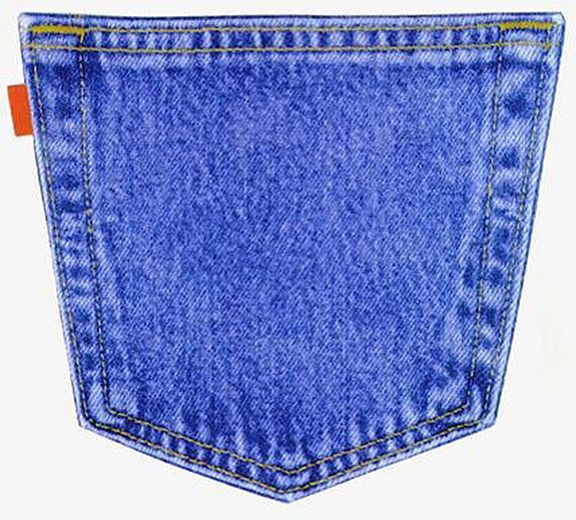
The German Supreme Court considered that the defendant’s get-up amounted to an infringement of the claimant’s Community trademark. Since this mark was registered for more than five years, infringement depends on whether the mark has been genuinely used within the meaning of Article 15 CTMR. The Appeal Court assumed that the mark had been used in the following form, which is separately registered as German national mark No DD 641 687:
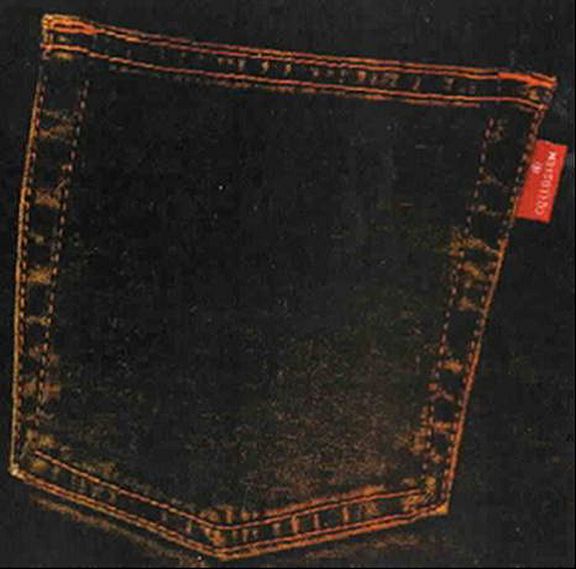
This mark differs from Community trademark No. 2 292 372 in that the flag bears the designation “LEVI’S”. The German Supreme Court considered that it is necessary to have an answer to the question whether use of the German mark could also be considered as use of the Community trademark and whether the acquired distinctiveness of the Community trademark was of relevance. The questions referred were the following:
Is Article 15 (1) of Regulation (EC) No 40/94 to be interpreted as meaning that:
1. a trademark which is part of a composite mark and has become distinctive only as a result of the use of the composite mark can be used in such a way as to preserve the rights attached to it if the composite mark alone is used?
2. a trademark is being used in such a way as to preserve the rights attached to it if it is used only together with another mark, the public sees independent signs in the two marks and, in addition, both marks are registered together as a trademark?
The ECJ, in a rather succinct judgment, concluded that when use of a mark together with another mark may be sufficient to acquire distinctiveness (as held in Nestlé, Case C 353/03, with regard to the “Have a Break” element of the composite “Have a Break – Have a KIT KAT”), the same must be true when genuine use is the issue. It thus answered the questions as follows:
The condition of genuine use of a trademark, within the meaning of Article 15 (1) of Council Regulation (EC) No 40/94 of 20 December 1993 on the Community trademark, may be satisfied where a registered trademark, which has become distinctive as a result of the use of another composite mark of which it constitutes one of the elements, is used only through that other composite mark, or where it is used only in conjunction with another mark, and the combination of those two marks is, furthermore, itself registered as a trademark.
Remarks
The Colloseum judgment is a welcome addition to the growing judgment of the ECJ concerning issues of genuine use. The present judgment comes only a few months after the Rintisch judgment – also on a reference from the German Federal Supreme Court – where the ECJ had held that where a version of the mark is used which does not alter the distinctive character of the mark as registered the fact that the used version is also registered does not constitute an obstacle to accepting the variant (see IP Report 2012/V). That put to rest doubts that arose after the ECJ’s judgment in the Bainbridge case (Case C-234/06 P). The present case was more complex because the use was made of a combination of two marks (red “flag” and “LEVI’S”), and there was also the issue of acquired distinctiveness. Still, the ECJ had no difficulty in accepting that in such a case as well there may be genuine use of the registered mark.
After the present judgment and the earlier Rintisch case the focus on use of variants will shift to the assessment of the degree of differences that will be accepted as not altering the distinctive character of the mark as registered, where a case-by-case approach will prevail, as well as to the issue of broad specifications and the use of the mark for some specific goods or services falling within the broad wording.
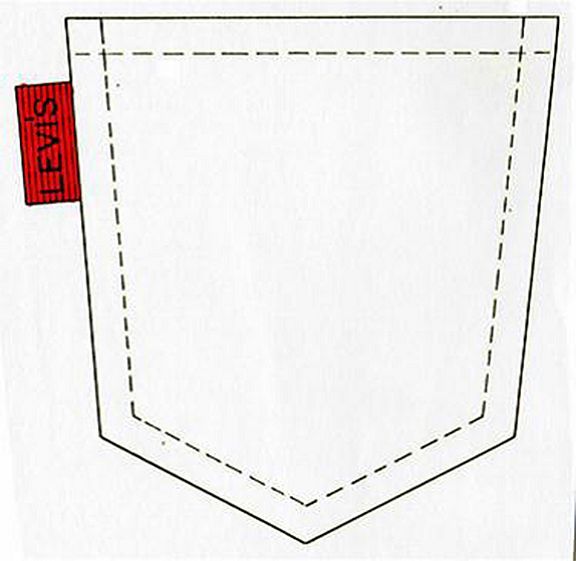
Reported by Karin Costescu
The principles of the law of bearers of the same personal name have been refined and expanded in the recent case law of the Supreme Court. The general principle is that no one can be prevented from fair use of his personal name in the course of trade. Therefore, where there are several persons with the same name, the prior user is basically required to allow the fair use of the same name by others despite the existence of likelihood of confusion. However, the second user, in order to rely on fair use, must do everything necessary and reasonable to reduce the likelihood of confusion as far as possible. What is necessary and reasonable in a particular case must be determined on the basis of a comprehensive balancing of interests.
The parties dispute the right to use the name “Völkl”. The plaintiff, the company Völkl GmbH & Co. KG, sells special footwear, namely safety, walking and mountain boots, hunting and winter boots and a military shoe. The plaintiff was established in 1923. The plaintiff is the owner of the figurative mark
registered in 1968 as well as of a word mark “VÖLKL” registered in 2005, both registered for shoes.
With the lawsuit, the plaintiff objects to the use of the term "Völkl" for ski and winter boots by a well-known ski manufacturer, who uses besides the trademarks “Marker” and “Tecnica” also the trademark “Völkl”.
One of the defendants offered under the website www.voelkl.de winter boots and ski boots by using the logo “Völkl”.

Another member of the Voelkl group offers under the trademark “Tecnica” ski boots, winter boots, Moonboots, walking and mountain boots and sandals. This defendant sold a pair of “Tecnica” Moonboots to a mystery shopper of the plaintiff and used an old delivery note with their former company name “Völkl GmbH & Co. KG” as well as the logo “Völkl” as shown above.
In addition, the lawsuit was directed against a former director of the defendant, who resigned before the action was brought.
The lower courts granted the requested relief. The Supreme Court referred the case back to the Court of Appeal. Although the plaintiff can claim prior rights on the term “Völkl” and there is a likelihood of confusion, the Court of Appeal, however, made no finding as to whether the plaintiff should accept the challenged use of the mark.
“Völkl” according to the principles on the rights of the bearers of the same personal name. The rules applicable to conflicts between bearers of the same name must be applied. In such a situation, the owner of prior rights cannot prohibit use of the same name merely because he is earlier without regard to the rights of the bearer of the same name. Rather, he must tolerate the use, despite existing confusion. However, this obligation to tolerate does not apply where the owner of the later rights increases the likelihood of confusion and thus disturbs the existing balance, unless he has a legitimate interest in the use and does all necessary and reasonable in order to counteract an increase in the likelihood of confusion. The lower courts had not properly applied these principles. For example, there were no findings as regards the argument of the defendant that ski boots are sports equipment rather than shoes and that despite the “three-brand strategy” (Marker, Tecnica and Völkl), the trade expects to obtain skis, bindings and ski boots from a single source.
As regards the former managing director, the Federal Supreme Court held that he was still subject to being sued in relation to the claim for information even though he resigned before the action was brought. Whether and how far he still had access to the business records or could acquire access and would thus be able to supply any requested information was not an issue of liability, but would determine the substance of his obligation to provide information.
Remarks
The assessment of the legitimate interests of the proprietor of the later mark or name and the necessary and reasonable measures to prevent the increase in the likelihood of confusion depends on a balancing of interests. The Courts must evaluate all factual circumstances and all the evidence provided in support of the respective claims. This also applies to the explanation of a legitimate interest in the expansion of activities which come close to the products of the other side. Parties in disputes in “same-name-cases” have in the future not only to explain all the circumstances of their respective use, but also their interest in any change of the existing balance through an expansion of their use.

Design Law
Reported by Dr. Henning Hartwig
On April 25, 2013, the General Court of the European Union handed down a detailed 166-paragraph judgment (available in French only; quotations from the decision in English are translations) in an action brought by the proprietor of Community design No 342951-0002 (indication of product: “watches”), Bell & Ross BV, against the Office for Harmonisation in the Internal Market (“OHIM”) for annulment of Decision R 1285/2008-3 of the Third Board of Appeal of OHIM of December 9, 2009, by which the Board dismissed the appeal brought against the decision of the Invalidity Division which had allowed the application for a declaration of invalidity being lodged by Klockgrossisten i Norden AB (“KIN”). The contested Community design, of which one of the views is reproduced hereafter,
was challenged on the basis of the earlier representation of a clock face shown hereafter:
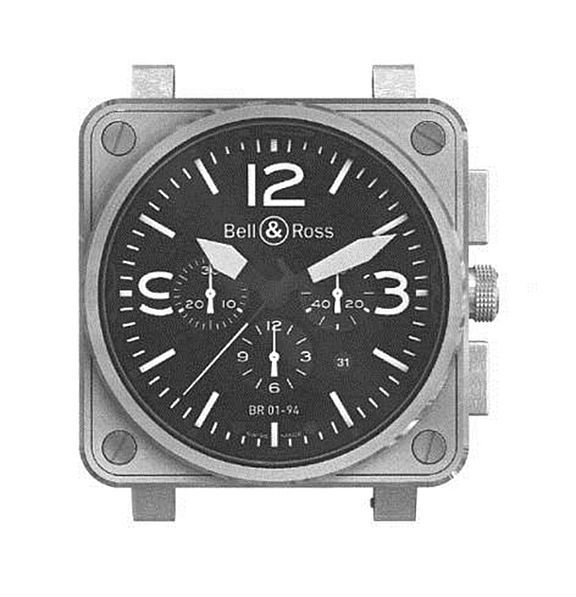
The main and third ground of appeal can be divided into three subchapters, namely conclusions on the “informed user”, the “degree of freedom of the designer” and the “comparison of the overall impression” produced by the conflicting designs.
Starting with the degree-of-freedom test, the Court confirmed that the designer’s degree of freedom in developing his design is established, inter alia, by the “constraints of the features imposed by the technical function of the product or an element thereof, or by statutory requirements applicable to the product.” Such constraints would result in a “standardisation of certain features, which will thus be common to the designs applied to the product concerned”. Starting from that, it appears that aesthetic or commercial constraints or considerations (as distinguished from technical and statutory constraints) are irrelevant when assessing the specific degree of freedom of the designer.
Turning to the notion of the informed user under Article 6 (1) CDR, the Court confirmed that the qualifier ‘informed’ suggests that the “user knows the various designs which exist in the sector concerned, possesses a certain degree of knowledge with regard to the features which those designs normally include, and, as a result of his interest in the products concerned, shows a relatively high degree of attention when he uses them.” The Court continued:
[104] However, that factor does not imply that the informed user is able to distinguish, beyond the experience gained by using the product concerned, the aspects of the appearance of the product which are dictated by the product’s technical function from those which are arbitrary.
Therefore, an informed user is a person having some awareness of the existing designs in the sector concerned, without knowing which aspects of that product are dictated by technical function.
Consequently, according to the General Court, issues of technical or legal constraints belong to the freedom of the designer falling under Article 6 (2) CDR (not to the concept of the informed user according to Article 6 [1] CDR).
Finally, when comparing the overall impression produced by the asserted prior design on the one hand and the challenged Community design on the other (Article 6 [1] CDR), the Court confirmed that assessing the individual character of a design is about “whether the overall impression produced by the latter differs from the overall impression produced by the designs previously disclosed, regardless of aesthetic and commercial considerations”. Discounting “commercial” considerations appears correct, while disregarding “aesthetic” considerations in analysing the overall impression appears doubtful in light of the informed user’s knowledge of the “various designs which exist in the sector concerned [and] […] the features which those designs normally include” and, in particular, when taking the decision of the General Court of November 13, 2012 in Antrax (T-83/11 und T-84/11) into account (there the Court found that an aesthetic concentration or, in the Court’s words, “saturation of prior art”, due to the existence of other designs showing the same features as the designs in question, might lead, when examining the overall impression, to a greater sensitivity of the informed user as regards the different internal proportions of the various designs).
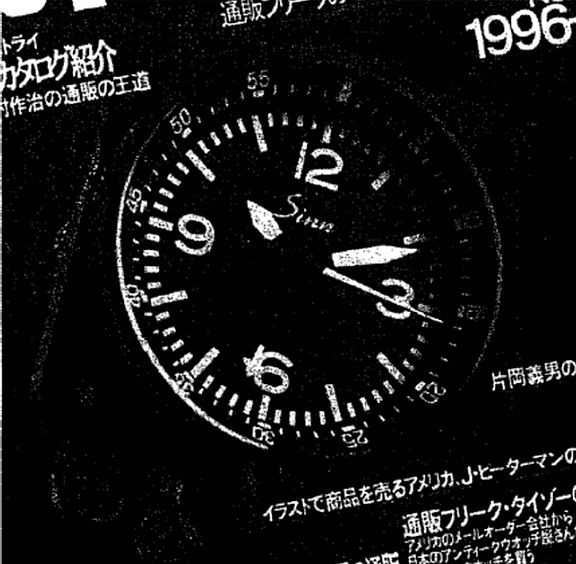
Reported by Dr. Henning Hartwig
The claimant was the owner of a German design registration (date of filing: February 3, 2004; date of registration: March 17, 2004), showing the outer appearance of a ridge roll to be incorporated in a roof. The claimant sued the defendant for alleged design infringement but the Karlsruhe Appeal Court dismissed the action, finding that, under Section 4 German Designs Act of March 12, 2004, (1) the asserted design was applied to a component part (= ridge roll) to be incorporated into a complex product (= roof) and (2) the features of the component part remaining visible during normal use of the complex product did not fulfil in themselves the requirements as to novelty and individual character (Section 4 German Designs Act corresponds to Article 3 [3] Designs Directive and Article 4 [2] Community Designs Regulation).
The Federal Supreme Court, also domiciled in Karlsruhe, confirmed the lower instance, holding that Section 4 German Designs Act was applicable to the case at hand (and to all other national designs filed and registered after October 27, 2001) and former German design law (lacking such a provision) was not. According to the Supreme Court, given that the design-in-suit met these requirements, the claimant was not allowed to claim any legitimate expectation as to the continued application of the previous law, and even less so given that the German Designs Act followed the Designs Directive which should have been implemented already by October 28, 2001).
Pursuant to Section 1 No. 3 German Designs Act, which corresponds to Article 1 lit c Designs Directive, “complex product” means a product which is composed of multiple components which can be replaced permitting disassembly and re-assembly of the product. Accordingly, pursuant to the Supreme Court, it was sufficient that (1) the product consisting of multiple component parts can be dis- and re-assembled (being possible in case of a roof even if some efforts and intervention would be necessary) and that (2) the multiple component parts can be replaced. On the other hand, Section 1 No. 3 German Designs Act would not require that the original component part will be re-used in case of re-assembling. Rather, pursuant to the text of the law, the multiple components must be susceptible of being replaced only (not: re-used). As a consequence, products (such as a roof), which can also be composed of component parts not produced individually, the latter being replaceable (as in case of a ridge roll), are deemed to be complex products in the sense of Section 1 No. 3 German Designs Act.
Media Law
Reported by Adrian Kleinheyer
The German Federal Supreme Court found Google liable for infringements of personality rights resulting from defamatory search suggestions by its so-called autocomplete function.
When typing his name in the search field on Google, the CEO of a German stock company discovered that the so-called autocomplete suggested as additional keywords “Scientology” and “Betrug” (“fraud”). The businessman felt his integrity undermined by the negative connotation of these two words appearing in connection with his full name and sued Google (in his and the company’s name), claiming injunctive relief and a pecuniary compensation for infringement of his right of personality. The plaintiff argued that he neither had any relationship to Scientology, nor was he ever accused of any fraudulent activities. Moreover, not a single search result actually showed a connection between the plaintiff and Scientology or fraud.Having initially obtained a preliminary injunction against Google, the following main action was dismissed by both the Cologne District Court and the Cologne Appeal Court. Both authorities found that the above-mentioned combination of words was not an expression of Google or its operators but merely the result of a search algorithm, based on what other Google users search for. Therefore, Google was not held liable for allegedly infringing suggestions provided by the autocomplete.The German Federal Supreme Court now annulled the decision of the Appeal Court finding that the autocomplete suggestion must be seen as a factual statement which is (at least according to the facts determined by the Appeal) untrue, thus infringing the plaintiff’s right of personality pursuant to Sections 823(1), 1004 German Civil Code in connection with Articles 1, 2 German Constitution. Based on the German legal concept of “mittelbare Störerhaftung” (“interferer liability”), Google (as well as every other search engine offering such a function) is legally liable for such an infringing autocomplete once it has been notified.
Remarks
The judgment was published most recently and attracted a lot of attention in the media. A similar case, where Germany’s former First Lady Bettina Wulff sues Google for defamatory autocomplete suggestions, is still pending.
While the decision at hand shows the general direction, it leaves some important questions in detail unanswered: What if some or at least one of the top search results would have led to content substantiating a connection between the claimant and Scientology or fraudulent activities? Would the suggestion made by the autocomplete become lawful, though sources are not necessary telling the truth?
Further to that, when assessing an alleged infringement of the right of personality, one has to distinguish between factual statements and expressions of opinions. The former, when false, may be prohibited as it was the case here and may result in money damages, while the latter are usually “protected speech”. How is Google (or any other search engine) to make such a distinction when the autocomplete leads to websites or search result expressing protected opinions? Also unclear is to which extent such claims may be made not by natural persons infringed in their right of personality, but also by legal entities or in the case of other exclusive rights.
As a result, Google’s task may not be impossible because prior notice by the allegedly damaged person is required. So far, there is no substantive reaction of Google to the present judgment. Thus, we may only speculate. It would appear likely that Google, before checking whether a notice given by a concerned user is justified or not, will simply comply by preventing the allegedly infringing autocomplete suggestion without examination of whether or not the complaint is justified. Perhaps Google (or other search engines offering such service) may find a way to modify the algorithm of its autocomplete function in a way that infringements can be avoided. In any case, Google faces the challenge to find the thin line between being accused censorship and avoiding legal liability.


